1201 Basic Kitchen Tools
Importance of Using the Right Tools in Culinary Arts
In culinary arts, the use of appropriate kitchen tools is essential for efficiency, precision, and safety. Each tool has a specific role, and using the right tool can significantly affect the quality of the food prepared and the overall cooking experience. Proper tools can enhance culinary creativity and reduce the risk of accidents.
Cutting Boards
Cutting boards are one of the most frequently used and essential tools in the kitchen. They are crucial for tasks like cutting, chopping, and slicing, helping to maintain kitchen hygiene and prolong the life of your knives.
Types of Cutting Boards
Cutting boards can be classified based on the materials they are made from. Each material has its unique advantages and disadvantages. The most common types of cutting boards are:
Wooden Cutting Boards
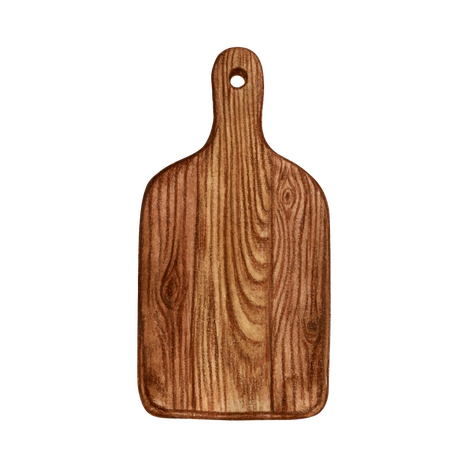
Advantages:
- Durable and long-lasting.
- Gentle on knife blades, preventing them from dulling quickly.
- Aesthetically pleasing and natural-looking.
Disadvantages:
- Can be more expensive than other types.
- Require proper care to prevent cracking and warping.
- Need careful cleaning to maintain food safety.
Examples of Wood Types:
- Maple: Hard and durable, knife-friendly.
- Walnut: Softer, aesthetically pleasing.
Plastic Cutting Boards
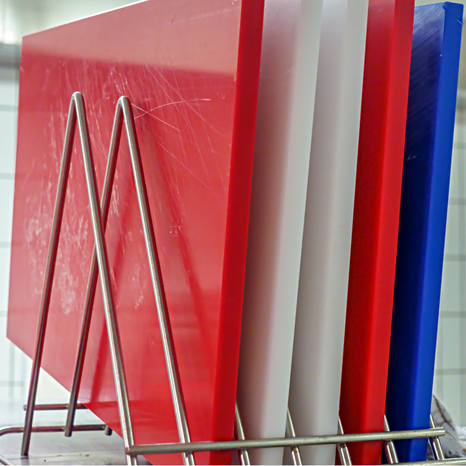
Advantages:
- Hygienic and easy to clean.
- Most models are dishwasher-safe.
- Generally less expensive.
- Can be color-coded for different food types, helping to prevent cross-contamination.
Disadvantages:
- Can develop knife marks over time, which can harbor bacteria.
- Some plastic types may deform with extensive use.
Color Codes:
- Red: For raw meats.
- Blue: For seafood.
- Yellow: For poultry.
- Green: For vegetables and fruits.
- White: For cooked foods.
- Brown: For raw meats.
- Purple: For allergen-free foods.
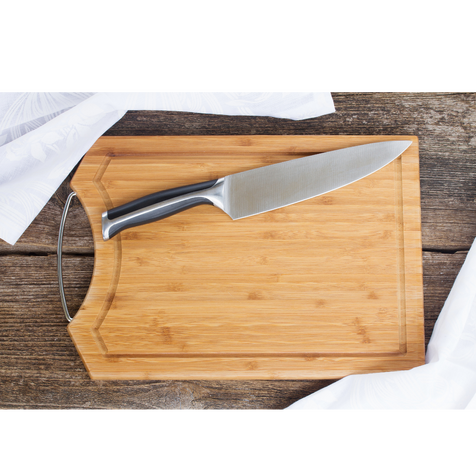
Bamboo Cutting Boards
Advantages:
- Eco-friendly and sustainable material.
- Harder than wood, making them long-lasting.
- Naturally resistant to bacteria.
Disadvantages:
- Very hard, which can dull knives more quickly.
- Like wood, requires regular maintenance and oiling.
Uses and Care
Proper usage and maintenance of cutting boards are essential for their longevity and hygiene. Below are some tips for using and maintaining different types of cutting boards:
Proper Cleaning and Maintenance
- Wooden Cutting Boards:
- Hand wash only, do not put in the dishwasher.
- Wash with warm soapy water and dry immediately.
- Regularly oil with mineral oil or specialized wood oil to prevent cracking and warping.
- Use vinegar or lemon juice for natural disinfection.
- Plastic Cutting Boards:
- Most plastic boards are dishwasher-safe, which ensures thorough cleaning.
- For non-dishwasher-safe boards, wash with warm soapy water and rinse well.
- Disinfect periodically with a bleach solution.
- Bamboo Cutting Boards:
- Hand wash like wooden boards and dry immediately.
- Regularly oil with bamboo or mineral oil.
- Disinfect with vinegar or lemon juice to ensure food safety.
Preventing Cross-Contamination
Cross-contamination occurs when harmful bacteria from raw meats, poultry, or seafood transfer to vegetables or cooked foods. To prevent this, follow these practices:
- Using Separate Boards: Use different cutting boards for raw meats, vegetables, and cooked foods. This practice helps prevent foodborne illnesses.
- Color-Coded Boards: Color-coded plastic boards make it easy to designate specific boards for different types of foods.
- Regular Cleaning: Thoroughly clean cutting boards after each use. Wash boards that have come into contact with raw meat with hot, soapy water and disinfect them.
Cutting boards are critical for maintaining hygiene and safety in the kitchen. When used and maintained correctly, they can be long-lasting and functional. By following these guidelines, you can create a safer and more efficient kitchen environment.
Measuring Cups and Spoons
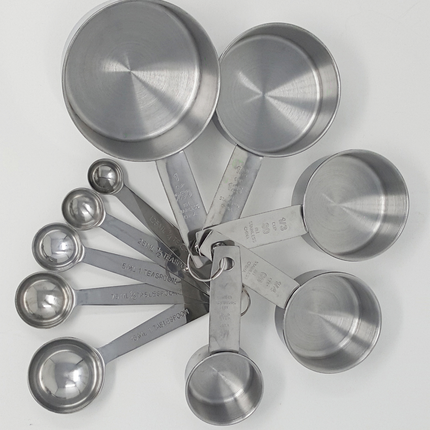
Types and Sizes
- Standard Sizes for Dry Measurements: Common sizes include 1/4 teaspoon, 1/2 teaspoon, 1 teaspoon, 1 tablespoon, 1/4 cup, 1/3 cup, 1/2 cup, and 1 cup.
- Standard Sizes for Liquid Measurements: Typically come in 1 cup, 2 cups, and larger capacities, often marked with both metric and imperial units.
Uses and Accuracy
- Importance of Accurate Measurement: Precision in measuring ingredients is crucial for the success of recipes, particularly in baking.
- Techniques for Measuring Dry and Liquid Ingredients: Dry ingredients should be leveled off with a straight edge, while liquid ingredients should be measured at eye level in a liquid measuring cup.
Mixing Bowls
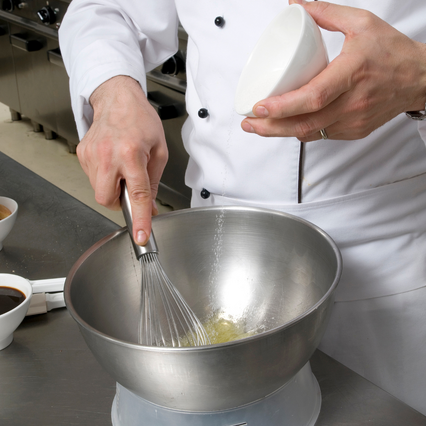
Types of Mixing Bowls
- Stainless Steel: Durable, non-reactive, and often preferred for their versatility.
- Glass: Allows visibility of contents and is microwave-safe.
- Plastic: Lightweight and less expensive, but can absorb odors and stains.
Uses in the Kitchen
- Mixing Ingredients: Essential for combining dry and wet ingredients.
- Marinating: Ideal for soaking food in flavorful liquids.
- Organizing Mise en Place: Helpful for keeping prepped ingredients separate and organized.
Spatulas and Turners
Spatulas and turners are indispensable tools in any kitchen, essential for a variety of cooking and baking tasks. They come in various types and materials, each designed for specific functions.
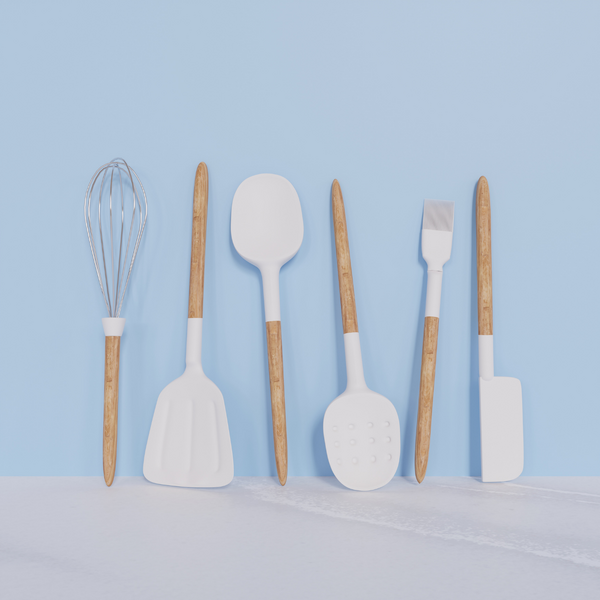
Types of Spatulas and Turners
Spatulas and turners can be broadly categorized based on their material and specific design. Here are the most common types:
Silicone Spatulas
Advantages:
- Heat-resistant, often up to 500°F (260°C).
- Flexible and gentle on non-stick cookware.
- Resistant to staining and odors.
Uses:
- Scraping bowls and jars to get every last bit of batter or sauce.
- Mixing and folding ingredients without damaging delicate mixtures.
Metal Spatulas
Advantages:
- Very durable and sturdy.
- Can handle high heat, making them ideal for grilling.
Uses:
- Flipping heavier items like burgers, steaks, and fish.
- Handling tasks that require a firmer grip and more control.
Plastic Spatulas
Advantages:
- Safe for non-stick cookware.
- Lightweight and generally less expensive.
Uses:
- Stirring and mixing ingredients in non-stick pans.
- General cooking tasks where high heat resistance is not required.
Uses in Cooking
Spatulas and turners serve multiple purposes in the kitchen. Here’s a breakdown of their primary uses:
Stirring and Mixing
Spatulas are ideal for stirring and mixing ingredients, especially in baking. Silicone spatulas are particularly useful for scraping down the sides of bowls, ensuring that all ingredients are well incorporated.
Best Practices:
- Use a gentle folding motion to mix delicate batters, preventing them from deflating.
- Scrape the sides and bottom of bowls thoroughly to ensure even mixing.
Flipping
Turners, especially metal ones, are perfect for flipping foods such as pancakes, burgers, and eggs. Their sturdy construction allows for easy handling of heavier items.
Best Practices:
- Slide the turner gently under the food to avoid breaking or crumbling.
- Use a quick, confident motion to flip food items to ensure even cooking.
Spreading
Spatulas are also excellent for spreading frostings, creams, and spreads evenly. Silicone and plastic spatulas work well for this purpose.
Best Practices:
- Use the flat side of the spatula for smooth, even spreading.
- For frosting cakes, use a turntable to make the process easier and more uniform.
Maintenance and Care
Proper care of spatulas and turners ensures their longevity and maintains hygiene in the kitchen. Here are some maintenance tips:
Cleaning
- Silicone and Plastic Spatulas: These are usually dishwasher safe. For hand washing, use warm soapy water and a sponge.
- Metal Spatulas: Hand wash with warm soapy water and dry immediately to prevent rusting. Some metal spatulas are dishwasher safe, but always check manufacturer instructions.
Storage
- Store spatulas and turners in a utensil holder for easy access.
- Avoid placing heavy objects on top of silicone and plastic spatulas to prevent warping.
Regular Inspection
- Check for cracks or damage regularly. Replace any spatula or turner that shows signs of wear, as damaged tools can harbor bacteria.
Safety Tips
- Heat Resistance: Ensure that the spatula or turner is appropriate for the cooking temperature. Silicone and metal are best for high-heat applications.
- Handle Length: Use tools with longer handles for grilling or cooking over open flames to keep hands safe from burns.
- Proper Use: Avoid using metal spatulas on non-stick surfaces to prevent scratching and damage.
Whisks
Types of Whisks
Whisks are classified by the shape and arrangement of their wires. Each type has unique advantages and uses. The most common types of whisks are:
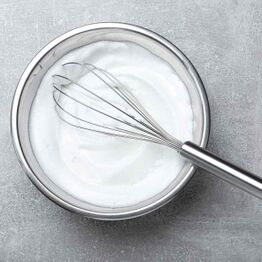
Balloon Whisk
Advantages:
- Wide wires help incorporate more air into mixtures.
- Ideal for voluminous and light mixtures.
Uses:
- Whipping egg whites and cream.
- Aerating light batters and mixtures.
Flat Whisk
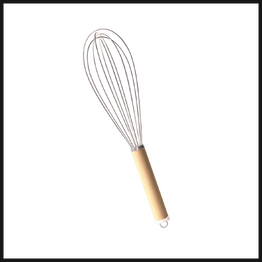
Advantages:
- Flat and broad wires are perfect for scraping pots and pans.
- Ideal for thicker mixtures like roux and sauces.
Uses:
- Scraping food from the bottom of pots.
- Mixing roux and sauces.
French Whisk
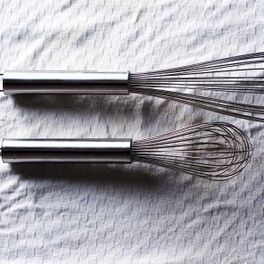
Advantages:
- Tighter wires add less air to the mixture.
- Suitable for denser batters and mixtures.
Uses:
- Mixing cake and cookie batters.
- Whisking dense sauces and creams.
Uses in the Kitchen
Whisks serve various purposes in the kitchen, each suited to specific tasks. Here are the main uses of whisks:
Mixing and Blending
Whisks are excellent for evenly mixing ingredients. The balloon whisk is particularly useful for combining dry and wet ingredients.
Best Practices:
- Use circular motions to thoroughly mix ingredients.
- Add ingredients slowly while whisking continuously to prevent clumping.
Aerating
The balloon whisk is ideal for incorporating air into mixtures, adding volume. This is crucial for making fluffy egg whites and whipped cream.
Best Practices:
- Whisk quickly and continuously to create air bubbles.
- Use a clean, dry whisk for the best results.
Whipping and Emulsifying
Whisks are also used to combine liquids into a uniform mixture. The French whisk is perfect for mixing dense sauces and creams.
Best Practices:
- Start slowly and gradually increase speed to fully combine ingredients.
- Continuously whisk to ensure proper emulsification.
Maintenance and Care
Proper care and maintenance of whisks ensure their longevity and hygiene. Here are some tips for maintaining and cleaning your whisks:
Cleaning
- Hand Washing: Wash whisks by hand with warm, soapy water, paying special attention to removing food particles trapped between the wires.
- Dishwasher: Most whisks are dishwasher-safe, but this method is particularly suitable for stainless steel whisks.
Storage
- Store whisks in a utensil drawer or holder to prevent the wires from getting damaged.
- Ensure that wires do not get bent or misshapen during storage.
Regular Inspection
- Check whisks regularly for bent or damaged wires.
- Replace any whisks that show signs of wear, as damaged whisks may not work efficiently and could harbor bacteria.
Safety Tips
- Proper Use: Avoid using excessive force, which can bend or break the wires.
- Heat Resistance: Keep whisks away from hot surfaces to prevent handles from melting or getting damaged.
- Cleaning: Use a fine brush to carefully remove food particles stuck between the wires when cleaning.
Tongs
Tongs are versatile kitchen tools used for gripping, lifting, and turning food with precision and control. They come in various designs and materials, each suited for different culinary tasks.
Types of Tongs
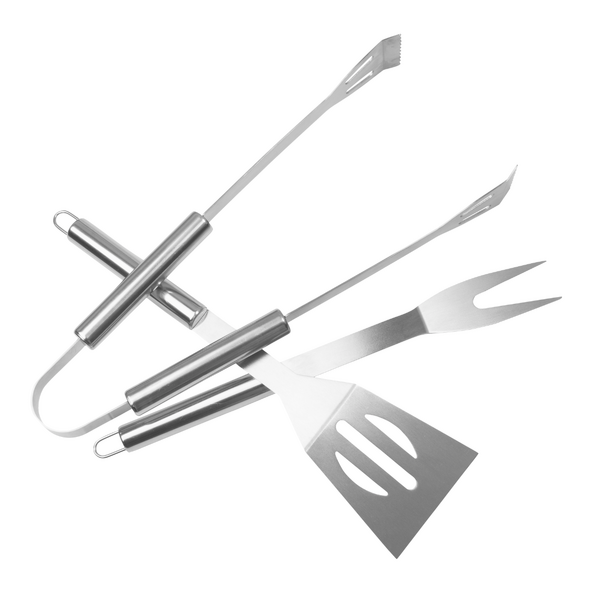
Tongs are typically categorized by their material and specific design features. The most common types of tongs are:
Stainless Steel Tongs
Advantages:
- Highly durable and resistant to heat.
- Provide a strong grip, making them ideal for heavy-duty tasks.
Uses:
- Grilling and barbecuing.
- Turning large cuts of meat and poultry.
- Handling hot foods directly from the oven or stove.
Silicone-Tipped Tongs
Advantages:
- Gentle on non-stick cookware, preventing scratches.
- Heat-resistant up to high temperatures (usually around 500°F or 260°C).
Uses:
- Handling delicate foods like fish fillets and vegetables.
- Cooking with non-stick pans.
- Serving salads and pasta.
Uses in Cooking
Tongs are indispensable for a variety of cooking and serving tasks. Here are the primary uses of tongs in the kitchen:
Turning Food
Tongs are perfect for flipping and turning foods during cooking, ensuring even cooking on all sides.
Best Practices:
- Use a gentle but firm grip to avoid tearing or damaging the food.
- Turn food items quickly to minimize heat loss from the pan or grill.
Transferring Food
Tongs make it easy to transfer hot foods from cooking vessels to serving plates or other containers.
Best Practices:
- Grip food securely to prevent dropping.
- Use tongs to move food from high-heat environments like grills and ovens to prevent burns.
Serving Food
Tongs are excellent for serving a variety of dishes, from salads to pasta and grilled items.
Best Practices:
- Use clean tongs designated for serving to maintain hygiene.
- Select tongs of an appropriate size for the food being served to ensure ease of use.
Maintenance and Care
Proper care of tongs ensures their longevity and functionality. Here are some maintenance tips:
Cleaning
- Stainless Steel Tongs: Can usually be cleaned in the dishwasher. For hand washing, use warm soapy water and a sponge.
- Silicone-Tipped Tongs: Dishwasher-safe, but also easy to clean by hand. Pay special attention to the silicone tips to remove any food residues.
Storage
- Store tongs in a utensil drawer or hang them using built-in loops or hooks to keep them easily accessible and prevent damage.
- Ensure the locking mechanism (if available) is engaged to save space and prevent tangling with other utensils.
Regular Inspection
- Check for any damage or wear, especially on the gripping ends and locking mechanism.
- Replace tongs if the silicone tips become worn or if the metal shows signs of rust or warping.
Safety Tips
- Heat Resistance: Ensure that the tongs are suitable for the cooking temperature. Stainless steel and high-quality silicone-tipped tongs can withstand high heat.
- Grip and Control: Use tongs with a good grip to prevent slipping. Silicone grips on the handles can improve control and safety.
- Proper Use: Avoid using tongs for tasks they are not designed for, such as prying open jars or handling extremely heavy items.
Strainers and Chinois
Strainers and chinois are essential kitchen tools used to drain, sift, and refine ingredients. They come in various types and are indispensable for tasks such as sifting dry ingredients, straining liquids, and creating smooth sauces.
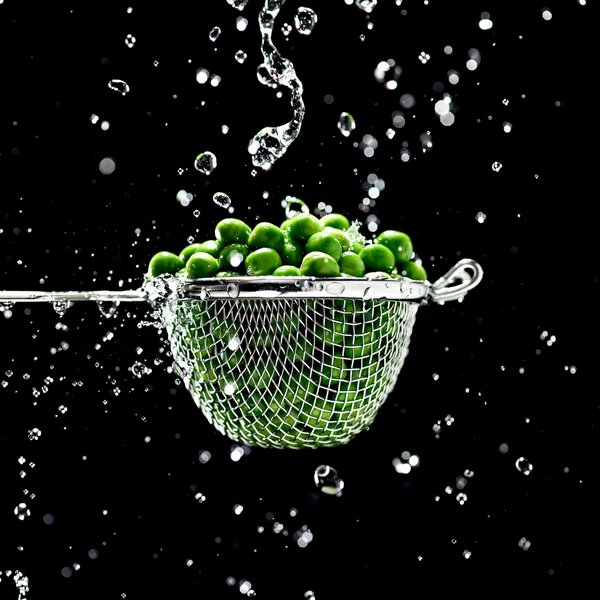
Types of Strainers and Chinois
Strainers and chinois vary in design and mesh size, each serving specific functions in the kitchen. The most common types are:
Mesh Strainer
Advantages:
- Available in various mesh sizes, from fine to coarse.
- Versatile and can be used for multiple tasks.
Uses:
- Sifting flour and other dry ingredients.
- Straining pasta and vegetables.
- Rinsing grains and beans.
Colander
Advantages:
- Larger holes allow for quick draining.
- Often comes with a base or handles for stability.
Uses:
- Draining pasta, vegetables, and fruits.
- Rinsing large quantities of produce.
Chinois
Advantages:
- Very fine mesh allows for ultra-smooth straining.
- Cone shape facilitates thorough straining.
Uses:
- Making smooth sauces and soups.
- Straining custards and purees.
- Separating fine particles from liquids.
Uses in the Kitchen
Strainers and chinois are used in various culinary tasks, each suited to specific applications. Here are the primary uses:
Draining Liquids
Strainers and colanders are essential for draining excess liquid from cooked foods, such as pasta or vegetables.
Best Practices:
- Use a colander for quick and efficient draining of large quantities.
- For smaller portions or finer straining, use a mesh strainer.
Sifting Dry Ingredients
Mesh strainers are ideal for sifting dry ingredients, ensuring even distribution and removing lumps.
Best Practices:
- Hold the strainer over a bowl and gently tap the side to sift.
- Use a fine mesh for powdered sugar and a coarser mesh for flour.
Straining Sauces and Soups
Chinois strainers are perfect for creating smooth, lump-free sauces and soups by removing fine particles.
Best Practices:
- Place the chinois over a bowl or pot and pour the liquid through.
- Use a rubber spatula to press the ingredients through the mesh for maximum extraction.
Maintenance and Care
Proper care and maintenance of strainers and chinois ensure their longevity and hygiene. Here are some tips:
Cleaning
- Mesh Strainers and Chinois: Hand wash with warm, soapy water to remove food particles from the fine mesh. Use a brush if necessary.
- Colanders: These are usually dishwasher-safe. For hand washing, use warm, soapy water and a sponge.
Storage
- Store strainers and chinois in a dry place to prevent rust.
- Nest different sizes together to save space.
Regular Inspection
- Check for any damage or wear, especially in the mesh, which can tear or warp over time.
- Replace any strainer or chinois that shows signs of damage to ensure effective straining and safety.
Safety Tips
- Handle with Care: Fine mesh strainers can be delicate. Avoid using excessive force when cleaning or straining.
- Heat Resistance: Be cautious when straining hot liquids to prevent burns. Use pot holders or towels to handle strainers and chinois.
- Proper Support: Ensure that strainers and chinois are properly supported over bowls or pots to prevent spills.
Uniforms
Uniforms are a crucial aspect of professional kitchen environments, playing a significant role in ensuring hygiene, safety, and presenting a professional appearance. Proper kitchen attire includes chef coats, pants, hats, and other accessories, each designed to meet the specific needs of culinary professionals.
Importance of Proper Kitchen Attire
Proper kitchen attire serves multiple purposes, including:
- Hygiene: Prevents contamination of food by keeping hair, sweat, and personal clothing separate from cooking areas.
- Safety: Protects against burns, spills, and other kitchen hazards.
- Professionalism: Enhances the image and standards of the kitchen, instilling confidence in both staff and customers.
Types of Kitchen Uniforms

Kitchen uniforms typically include the following components:
Chef Coats
Advantages:
- Made from thick, durable fabric to protect against spills and burns.
- Double-breasted design allows the coat to be reversed, hiding stains.
- Often features knotted buttons that do not melt under heat.
Uses:
- Worn by chefs to provide a professional appearance and protect personal clothing.
- Helps in maintaining a hygienic environment by covering the upper body completely.
Chef Pants
Advantages:
- Designed for comfort and flexibility, allowing free movement in the kitchen.
- Often come in darker colors or patterns (such as houndstooth) to hide stains.
Uses:
- Worn by kitchen staff to ensure ease of movement and protection from spills and burns.
- Maintains a professional and uniform appearance among the staff.
Chef Hats
Advantages:
- Keeps hair contained, maintaining hygiene standards.
- Often designed to be breathable to keep the head cool.
Uses:
- Worn by chefs and kitchen staff to prevent hair from falling into food.
- Signifies rank and role within the kitchen hierarchy.

Aprons
Advantages:
- Provides an additional layer of protection against spills and splatters.
- Easy to put on and take off, making it convenient for quick changes.
Uses:
- Worn over the chef coat to keep it clean during cooking.
- Protects the lower body and personal clothing from spills.
Hygiene and Safety
Proper kitchen attire is essential for maintaining high hygiene and safety standards in the kitchen. Here are some key practices:
- Regular Cleaning: Uniforms should be washed regularly to maintain cleanliness and prevent contamination.
- Proper Fit: Uniforms should fit well to avoid accidents caused by loose or ill-fitting clothing.
- Protective Features: Look for uniforms with features like heat-resistant buttons, reinforced seams, and durable fabrics.
Maintenance and Care
Proper maintenance of kitchen uniforms ensures their longevity and effectiveness. Here are some maintenance tips:
Cleaning
- Frequent Washing: Uniforms should be washed after each use to remove stains and prevent the buildup of bacteria.
- Proper Detergents: Use mild detergents that effectively clean without damaging the fabric.
- Stain Removal: Treat stains promptly with appropriate stain removers to prevent permanent marks.
Storage
- Store uniforms in a clean, dry place to prevent mold and mildew.
- Hang uniforms to avoid wrinkles and maintain a professional appearance.
Regular Inspection
- Check for wear and tear, especially on seams and buttons.
- Replace any uniform parts that are damaged or excessively stained to maintain a professional look.
Safety Tips
- Heat Resistance: Ensure uniforms are made of heat-resistant materials to protect against burns.
- Proper Coverage: Wear uniforms that cover as much skin as possible to minimize exposure to hot liquids and surfaces.
- Comfort and Fit: Choose uniforms that are comfortable and well-fitted to allow free movement and reduce the risk of accidents.
Linens
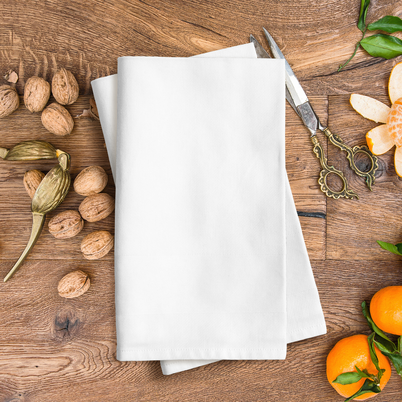
Types of Linens
- Tablecloths: Enhances dining experience with a clean, elegant surface.
- Napkins: Essential for guest comfort and hygiene.
- Kitchen Towels: Multi-purpose, used for drying and cleaning.
Uses in the Kitchen
- Maintaining Cleanliness: Essential for wiping surfaces and hands.
- Professional Presentation: Ensures a neat and organized appearance.
Kitchen Towels
Types and Uses
- Drying Hands and Dishes: Absorbent materials ideal for drying tasks.
- Cleaning Spills: Quick and efficient for maintaining clean surfaces.
- Protecting Surfaces: Provides a barrier when handling hot items.
Oven Mitts and Pot Holders
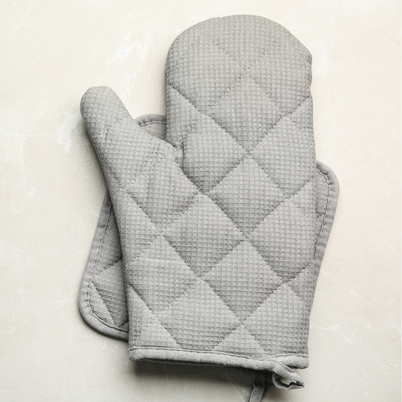
Types and Materials
- Silicone: High heat resistance and easy to clean.
- Cotton and Quilted: Comfortable and flexible, often insulated.
Uses in Handling Hot Items
- Protecting Hands: Essential for safely handling hot pans and trays.
- Preventing Burns: Ensures safe removal of items from the oven.
